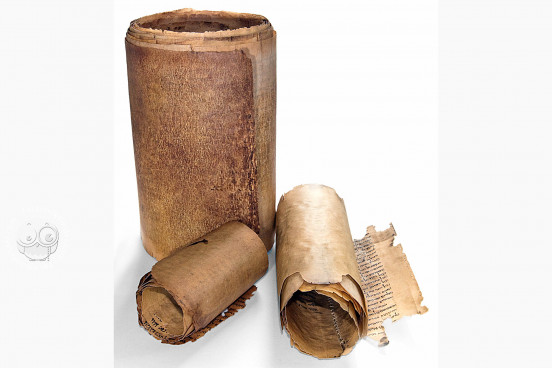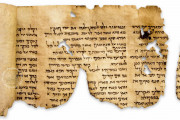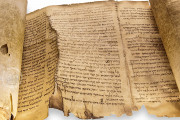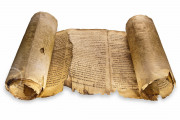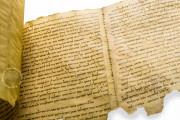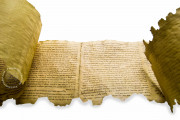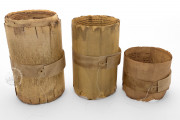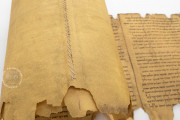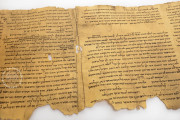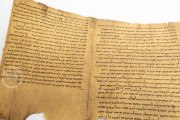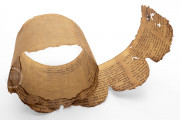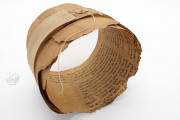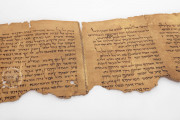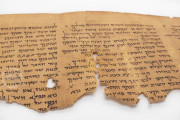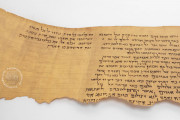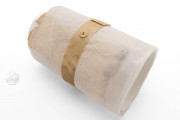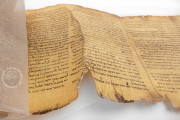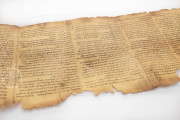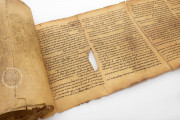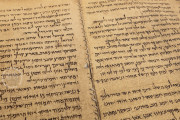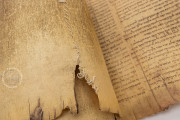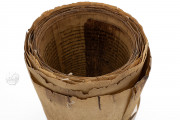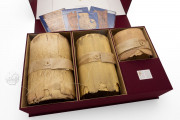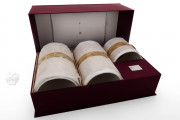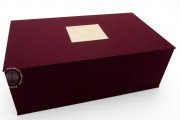Discovered between 1946 and 1956 in caves at Wadi Qumran, a site located about two kilometers inland from the northwest shore of the Dead Sea, the Dead Sea Scrolls are a treasure of 981 different texts datable between 130 BCE and 75 CE. Lost for 2000 years, when the Dead Sea Scrolls were found, the discovery was defined the most important archaeological find of the twentieth century. The majority of the scrolls is written in Hebrew, some in Aramaic, and a few in Greek.
The Dead Sea scrolls are of extraordinary historical, linguistic and religious significance as they are the third oldest manuscripts with texts of the Hebrew Bible. They also contain extra-biblical writings, which testify diverse religious practices in the Second Temple Judaism. Made of leather or parchment of different colors ranging from light brown to yellow, the finest scrolls present a polished parchment of white color. The scrolls impressively resisted time thanks to the ancient people who sealed some of them in clay jars, often wrapped in linen covers.
The Dead Sea Scrolls: An Extraordinary Discovery
Professor Eleazar Sukenik first recognized the antiquity of the first seven scrolls that were found. Looking at the scrolls for the first time, Professor Sukenik was thrilled to realize that they contained a text that had not been read for more than two thousand years.
Other four scrolls were brought to the Syrian Orthodox Christian Church and eventually to the United States, where they were displayed in 1949. The Government of Israel purchased these scrolls now preserved in the Shrine of the Book in Jerusalem.
Between 1949 and 1962, new caves near Qumran were found with thousands of additional scroll fragments. Because of the richness of the discovery, it has taken 60 years to publish the collection. While scholars debate over the contents of the scrolls, their antique age has been generally accepted. It is remarkable that the text of the majority of these Hebrew manuscripts has hardly changed in two thousand years.
The Great Isaiah Scroll, the Manual of Discipline and the Habakkuk Commentary
The Great Isaiah Scroll, 1QIsa, is the only complete biblical text among the Dead Sea Scrolls. It was found in Cave One at Qumran and dates to 120 BCE. The book of Isaiah is remarkable for the fact that it is transmitted in a version that hardly changed over the centuries.
The Scroll 1QS is known as the Manual of Discipline or the Rule of the Community and it is an extraordinary document for religious and social reasons because it contains the rules of conduct for the Qumranites. These were additional rules to the commandments contained in the Pentateuch.
They regulated the personal relationships in a Jewish community that separated itself from the other sects of Judaism in Jerusalem. The Habakkuk Commentary, 1QpHab, presents an interpretation of the biblical text with references to facts of the time of the writer.
We have 2 facsimiles of the manuscript "Dead Sea Scrolls (Collection)":
- The Dead Sea Scrolls facsimile edition published by Facsimile Editions Ltd., 2007
- The Dead Sea Scrolls. Reproduction made from the original scrolls kept in the Shrine of the Book, Jerusalem facsimile edition published by Johnson Reprint, 1979

